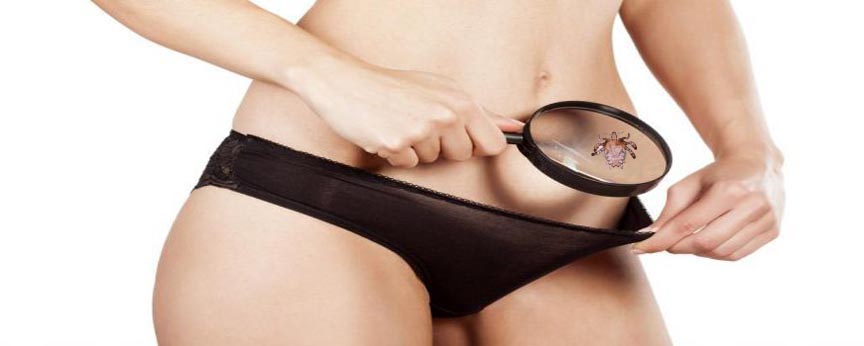Pubic Lice – Pubis Lice (Pediculosis pubis)

What is Pubic Lice?
Pubis lice (Pediculosis pubis) are small parasites that live around the groin and genitals, as the name suggests. These parasites, which have a pointed head and claws to attach to the pubic hair, can grow to about 1-4 millimeters. Pubic lice are relatives of head and body lice.
How Is Pubic Lice Transmitted?
The most common cause of transmission of pubic lice is sexual intercourse. Commonly used items such as towels, sheets, blankets and clothes, especially underwear and bedding, can cause you to get pubic lice. This parasite is usually seen in people who have many sexual partners, live in a common life in crowded environments and do not follow the cleaning rules.
Pubic lice eggs hatch in 5-7 days and reach full maturity after about 8-10 days. Pubic lice are mostly transmitted through sexual intercourse. Humid, hot and crowded environments increase the possibility of contamination. Pubic lice and their eggs continue to be transmitted as long as they remain alive on the infected person or on their clothes.
Pubic lice do not distinguish between young and old. As soon as he gets the chance, he’ll jump right on you. It settles in your groin and finds all sorts of ways to annoy you.
Pubic lice, like their other relatives, feed on blood, but are much more itchy. Its treatment is aimed at killing adult pubic lice and their eggs. The drugs used for this are the classic lice drugs.
What are the Symptoms of Pubic Lice?
The most common symptom of pubic lice is itching. When you think of pubic lice, don’t think of a type of lice that lives only in the pubes, it is possible to encounter pubic lice in other hairy areas of your body, because pubic lice can live in any hairy area, including the head.
Where Do Pubic Lice Settled?
- Thigh
- Tummy
- Chest
- Beard
- Mustache
- Hairy shoulders
- Eyebrows and eyelashes in children
When to go to the doctor when infected with Pubic Lice?
If the drugs don’t work
if you are pregnant
If the wounds due to itching are opened
The problems caused by Pubic Lice?
Pubic lice are usually easily treated with lice remedies. However, some people who are infested with pubic lice can develop complications.
Change in skin color:
We know that pubic lice feed on our blood. This is why our skin can change color. Pubic lice stick to our skin and drink our blood until they are full, and then they leave our bodies. When they leave, they leave small bluish spots behind. (These spots are actually bruises we know) There is no cure, the only thing you can do is wait for the spots to go away on their own, just like other bruises.
Secondary infections:
Pubic lice feed by sucking our blood and are very itchy when they bite. Excessive scratching can naturally damage our skin. Prolonged scratching can cause skin bleeding. These bleedings on the skin turn into wounds and due to poor hygiene, these wounds can become inflamed.
Irritation to eyes:
In adults, we do not see pubic lice on eyelashes and eyebrows, this is usually seen in children. Lice on eyebrows and eyelashes make the eyes very itchy, a child rubbing their eyes for a long time may irritate and damage their eyes over time.